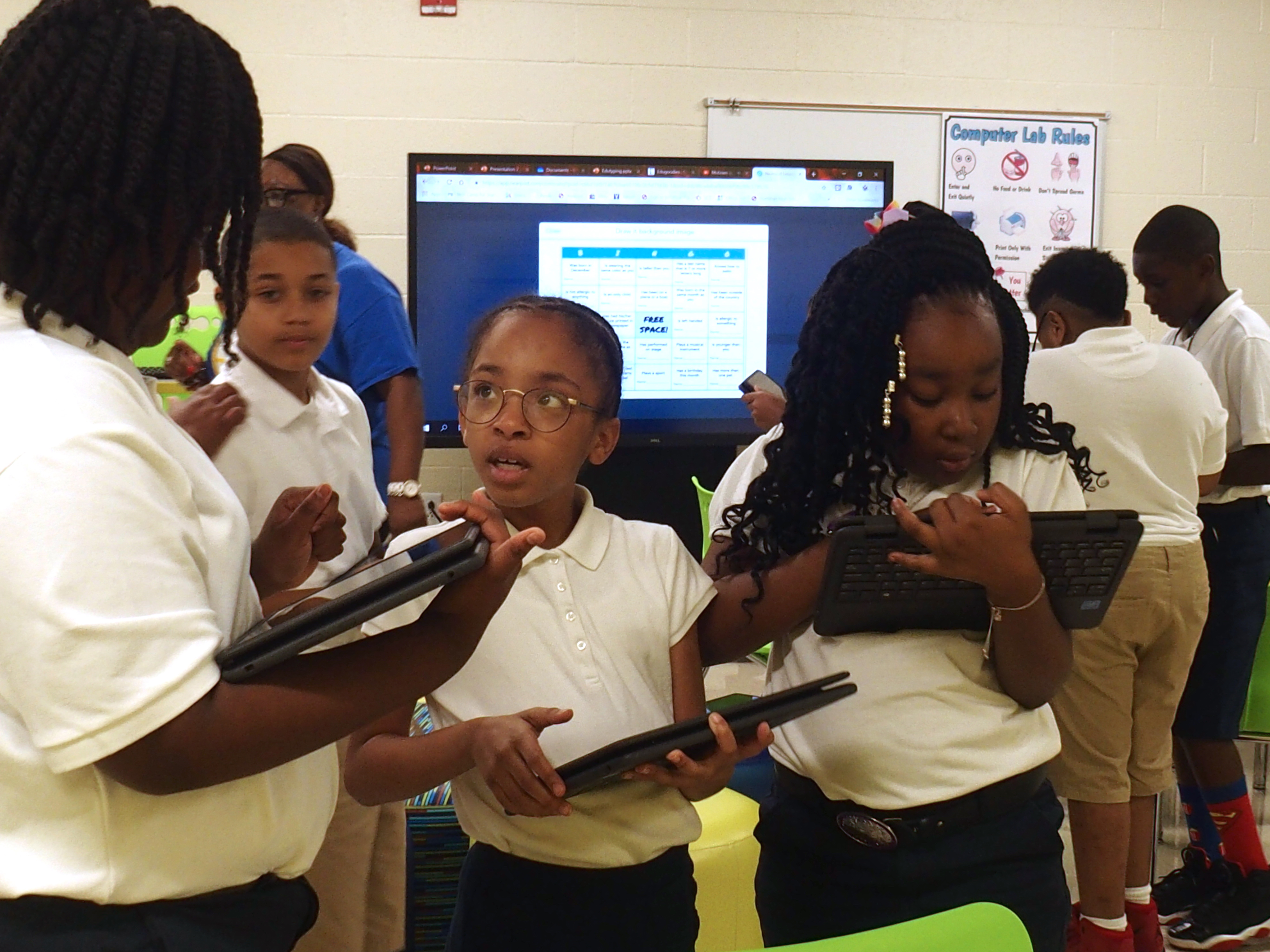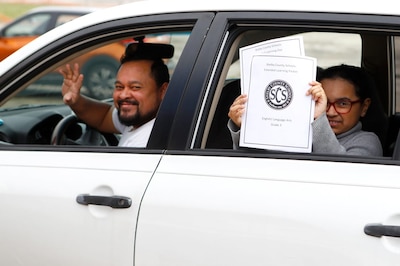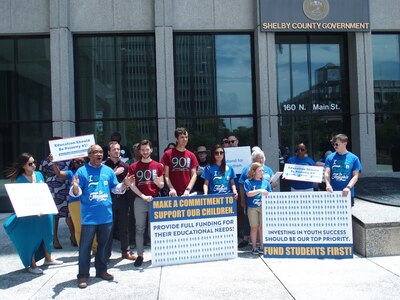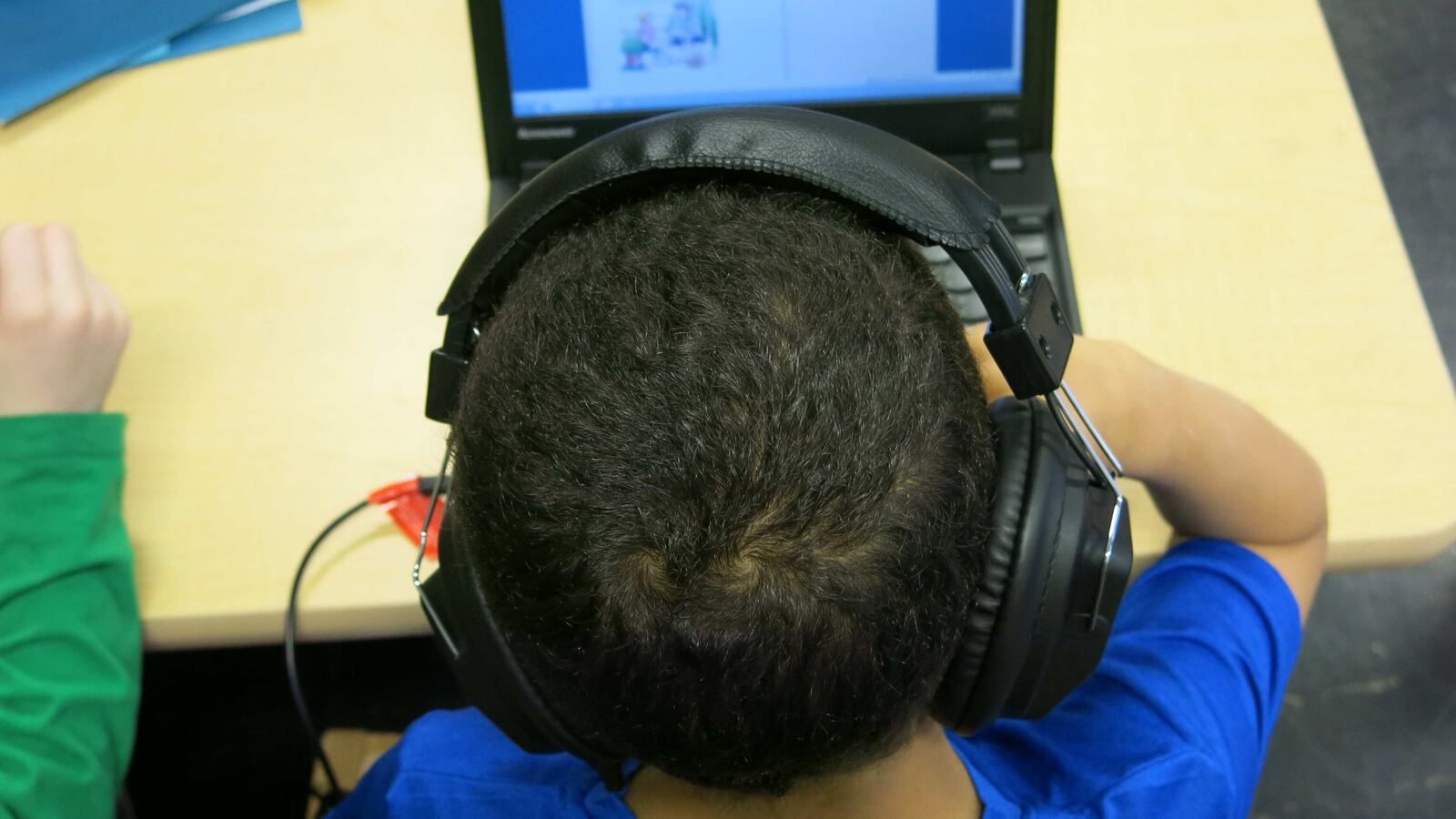Getting all Shelby County Schools students learning online could initially cost anywhere from $21 million to $77 million based on three options in a proposal that Superintendent Joris Ray released Thursday.
The most expensive option is a “multiyear strategy” that would provide every student with a new device and internet access if they need it. The other two options would use the district’s existing inventory of about 35,000 laptops and tablets plus new devices distributed first to students from low-income families. One of those plans would have district-paid internet, the other would not.
All three options include a $35 monthly stipend for the district’s 6,000 teachers and teacher training. Each option comes with an additional estimate if students from the district’s 57 charter schools were included.
The proposal gives few details about when the district would start to distribute devices to students. Ray’s administration had already started trying online learning at a few schools and was aiming to phase-in devices to all schools by 2025.
But the COVID-19 pandemic and the closing of school buildings as a result heightened the need for technology advances to happen more quickly, and some believe the plan is still too slow to help students when they need it most.
The plan comes a month after Ray said the coronavirus pandemic and subsequent school closures amplified the glaring inequities of internet and laptop access in the Memphis community. Census data show that in some neighborhoods, fewer than half of households have an internet subscription. Most of the district’s students live in poverty.

“In addition to providing instructional support, we are seizing this opportunity to permanently close the digital divide that our students have historically faced as a result of inadequate access to technology,” Ray tweeted Thursday evening.
For each of the options, students in prekindergarten through second grade would get a tablet. Students in third through 12th grade would get a laptop. Below is a summary of what each proposal would cost. (You can read the full plan at the bottom of this story.)
- $77.2 million initial cost and $36.6 million annually: All students get a new device and the district pays for internet access.
- $40.6 million initial cost and $23.7 million annually: All students get a new or existing device and families are responsible for internet access as the district works with providers for discounted rates. Students from low-income families would get priority to receive devices.
- $21.2 million initial cost and $21.2 million annually: Students from low-income families will receive a new or existing device and the district pays for internet access.
Other urban districts across the nation have already switched to online learning during coronavirus-related closures, including districts with high poverty and internet access disparities like Memphis. But whether the changes will be successful remains unclear, and some district leaders are afraid the quick transitions will cost them later.
District officials stress that a measured rollout is necessary for online learning to be beneficial to students.
“Even with the purchase of new devices, we still want to ensure students can read,” said Jerica Phillips, a district spokeswoman. “Literacy is still our top priority.”
The board could vote on the technology plan as soon as this month, but a date has not been set.

“Laptops and handheld devices should be seen as a medium through which education can be pushed through,” said school board member Kevin Woods. “It’s part of an overarching goal to reimagine how we educate students.”
But some parents and advocates hope for a short-term plan while the district irons out the details.
Shelby County Schools has offered instructional material while school is out, including paper packets for families without internet access, downloadable worksheets, a host of online education videos, and even televised lessons.
The TV programs have kept Jessica Chambers’ 5-year-old son enamored for weeks. But her 14-year-old son has lost all motivation. She has been picking up the district’s paper packets at meal distribution sites every other week and is ready for something more. But she doesn’t have a laptop or internet access. The only smartphone in the home is hers and she has been working longer hours than normal as a janitor.
“I sit them down and make them do it and I check their work,” said Chambers. But that task has become harder to enforce as the closure continues. “They only answer one or two questions and stop.”
The district has half the laptops and devices needed for its 95,000 students, and “most of them need to be upgraded,” Phillips said. Teachers started surveying parents this week about access to devices and the internet.

Cardell Orrin, the executive director of Stand for Children, an education advocacy organization in Memphis, said the district could start distributing the devices they have now rather than wait until a comprehensive plan is approved. He also worries the district may not be able to get enough devices if it waits as school districts across the country scramble for new ones.
“If we’ve got 35,000 devices available, let’s sanitize them and get them out to students as soon as possible,” he said. “In the current environment of a crisis situation, part of the challenge is figuring out how to do something in the short-term while we’re still working on the long-term plan.”
Ray’s team had already implemented part of an online learning trial at some schools, but a districtwide plan had not been finalized, Phillips said. Ray’s new plan comes 11 days before the school board is expected to vote on its 2020-21 budget.
Money for the plan could come from the local, state, or federal government, or philanthropies and corporations who are looking to relieve the pandemic’s effects on families. But those sources are also struggling.
State funding for schools is largely from sales tax revenue. As business slows and Tennesseans stay home to stem the spread of the virus, sales tax revenue is expected to drop. Shelby County Mayor Lee Harris said Wednesday that the county faces a $39 million deficit and needs to cut spending.
Still, Shelby County Schools is slated to get about $49 million of the federal CARES Act, which districts can use to upgrade or purchase technology. But plans for what to do with that money are not final.

